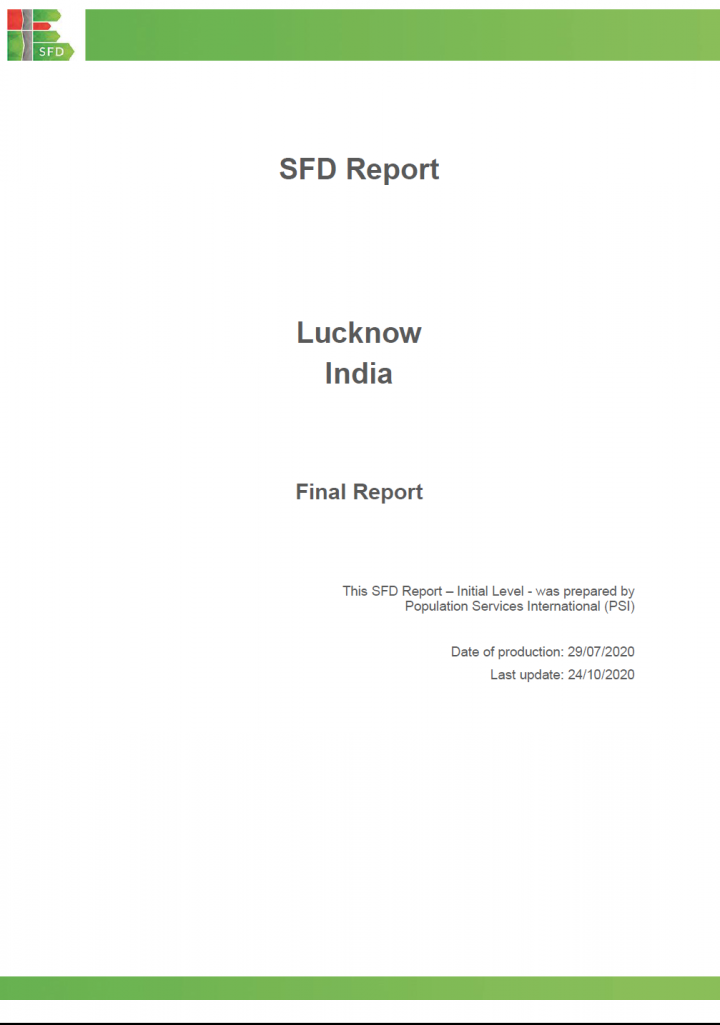
Published in: 2020
Pages: 38
Publisher:
Population Services International (PSI)
Author:
Singh, A.
Uploaded by:
SuSanA Admin
Partner profile:
cewas - international centre for water management services
2396 Views
314 Downloads
Lucknow is the capital city of the Indian state of Uttar Pradesh. Lucknow is also the tehsil and the district headquarters of the Lucknow district (TCPD, 2018). The urban local body governing the city is Lucknow Municipal Corporation (LMC)/Lucknow Nagar Nigam (LNN). Lucknow is a part of the Atal Mission for Rejuvenation and Urban Transformation (AMRUT) and the Smart city Mission of the Government of India (GoI).
The jurisdiction of LNN spans over an area of 349 km2. The city is divided into 8 administrative zones and 110 wards. The total population of the city as per census 2011 is 2,817,105, while as per LNN the current population is 3,391,208 with 1,765,632 males and 1,625,576 females (LNN, 2019). Total number of households in the city are 557,130 and the average household size is 6.09 (LNN, 2019).
The city is situated at the latitude 26o 30’ N and longitude 81o 13’ E. The city is located at an elevation of 123 metres above sea level. The average rainfall in Lucknow city is 269.9 mm (Singh et al., 2012). Temperature in winters i.e. November to February are between 3o C – 16o C, while in summers i.e. March to August the temperature varies in the range of 28o C – 41oC. The city is situated in the upper Gangetic region. The chief geographical feature of the city is River Gomti which divides the city in Trans- Gomti and Cis- Gomti region (LNN, 2016). Lucknow is located in the Agro- climatic zone V, and features on the central plain region.
The region receives on an average 979 mm of rainfall; the climate ranges from dry sub-humid to semi-arid and the soil is alluvium calcareous sandy loam (GOI, 2015).
Bibliographic information
Singh, A. (2020). SFD Report - Lucknow, India. Population Services International (PSI)
Filter tags
East Asia & Pacific English Politicians and local decision makers Practitioners SFD Report















